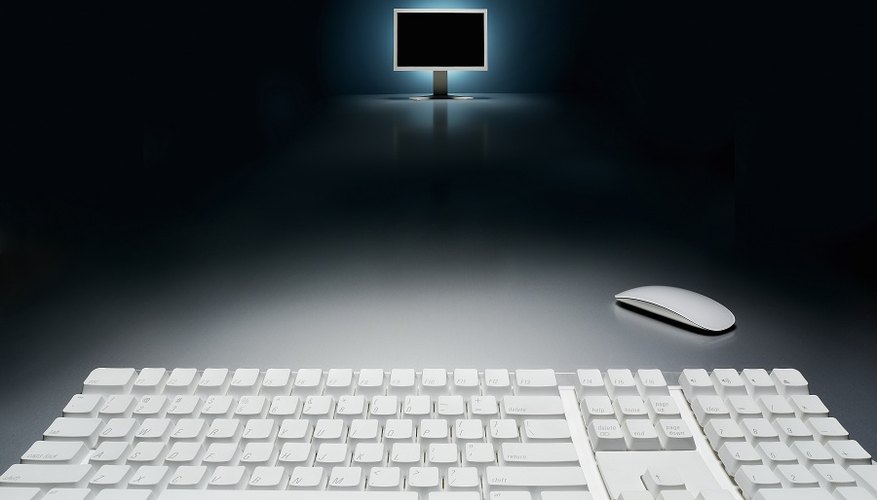Laptops are convenient for mobile computing and they enable business travellers to deliver presentations using an LCD projector. The LCD projector functions as an external monitor. Windows XP provides a built-in function to activate a mirrored presentation mode so that your audience can view your presentation and you can see the content on your computer screen. An advanced feature that PowerPoint 2007 uses requires setting up two displays -- your presentation to your audience and your desktop to control the presentation.
Presentation mode: Mirroring
Plug the LCD connector into your laptop and turn on the projector. Some laptops or projectors require an adapter. Turn on your computer and wait for the computer to recognise the LCD projector: The LCD projector may display "Computer 1" to confirm a device setting.
Confirm that your desktop is projected on the screen and that your computer screen is blank. Locate the function key at the top of your keyboard with "LCD," "CRT" or LCD icon -- usually the F8 or F10 key. Press the correct function key while holding down the "Fn" key.
- Plug the LCD connector into your laptop and turn on the projector.
- Locate the function key at the top of your keyboard with "LCD," "CRT" or LCD icon -- usually the F8 or F10 key.
Confirm that the LCD screen is blank and that you can see your desktop on your computer screen. Press the function key and "Fn" key at the same time. The projection screen and your computer screen now should display your desktop. Launch your presentation.
Advanced: Two displays for presentations
Plug in the LCD connector to your laptop and turn on the projector. Turn on your computer and wait for the computer to recognise the LCD projector: The LCD projector may display "Computer 1" to confirm a device setting.
Click the Windows "Start" menu, select "Control Panel" and choose "Appearance and Themes." Select "Display" to view two monitors -- LCD and your computer screen.
Click the "Settings" tab and click the "Identify" button to display a "1" and a "2" for your screens. Verify that your laptop screen displays "1," which designates it as the primary monitor. To change your the primary monitor, select the desired monitor in the Settings dialog box and click the "Use this device as the primary monitor" check box.
Launch your presentation as a slide show and verify that the LCD screen displays the current slide and your laptop monitor displays presenter control information, such as time, slide number, preview of next slide. If your presentation software doesn't have this presenter control function, change your displays to "mirroring."
- Plug in the LCD connector to your laptop and turn on the projector.
- Launch your presentation as a slide show and verify that the LCD screen displays the current slide and your laptop monitor displays presenter control information, such as time, slide number, preview of next slide.
